| Page last updated
19 August 2005 |
MUSSELp in Zambia: Non-Molluscan Pictures
Our 2005 Reconnaissance Expedition to Zambia (15 July-2 August 2005) was bigger than just the MUSSELp. Besides malacology, the objectives of our mission included such diverse disciplines as ornithology, entomology and proposal development. Click here to learn more about our malacological collecting sites. To reach all of the planned research sites involved a great deal of travel, and on the way we had the opportunity to see a lot of wonderful sights. The objective of this page is to display some of the non-molluscan images that we captured (in no particular order).
The Group
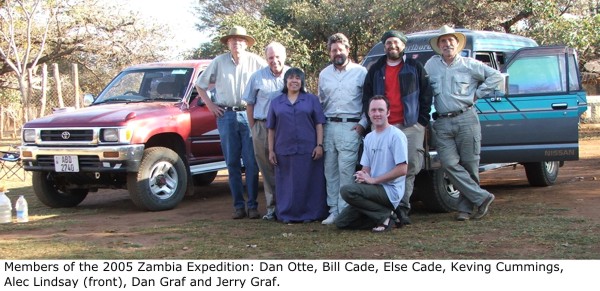
The MUSSELp was only a subset of the contingent working in Zambia for those 17 days in July and August of 2005. Traveling along with the KSC and DLG, and their long-time volunteer Jerry, were Dr. Alec Lindsay of Northern Michigan University, Dan Otte of the Academy of Natural Sciences and Bill & Else Cade of the Lethbridge University in Alberta, Canada. The latter three traveled in the Red Hilux (nicknamed "Speedy Cricket"), and the MUSSELp + ARL went about in the gray-green Safari ("Reasonable Mussel").
Thanks to Our Helpers!
|
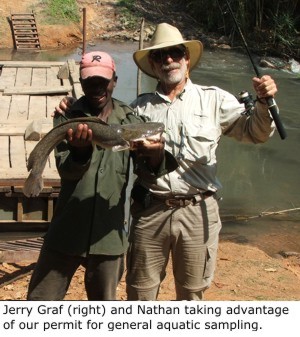 |
The success of our trip to Zambia was facilitated by three satellites of the MUSSEL Project: Alex Chilala, Dan Otte and Jerry Graf. Alex was our local man and saw us through the permitting process, Dr. Otte served as our guide and Jerry, as an ANSP Volunteer, provided logistical support including first aid and improvised automobile repair. Many thanks, guys!
|
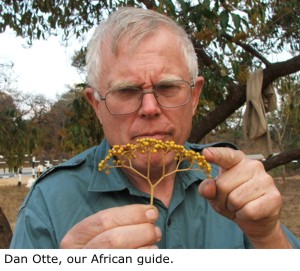 |
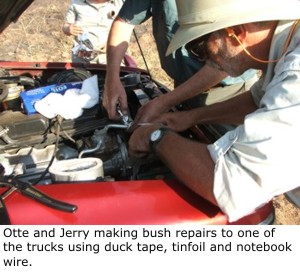 |
Luangwa River
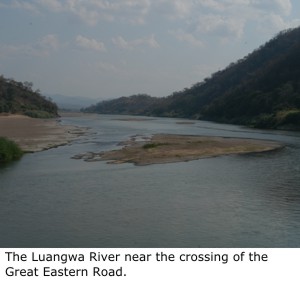 |
The Luangwa River is a major tributary of the Zambezi River in eastern Zambia. The first mussels that we collected on this trip were collected from just above where the Great Eastern Road crosses the River at Luangwa Bridge (Site 2).
The Luangwa was about the only water we saw for the first week — most of the other "tributaries" we encountered were completely dry! The River, as we saw in in the dry season, flows shallow through a wide flood plain indicating its wet season magnitude. The ample sandbars were inviting to we malacologists, but the ever present hippos and crocs often made us think twice before approaching the water.
As we camped along the Luangwa, the work day ended abruptly with sunset, we pulled up seats and enjoyed the view. |
|
Dr. David Livingstone
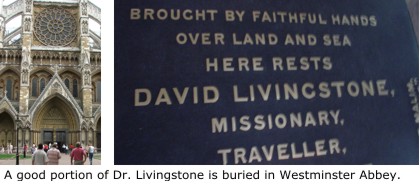 Dr. David Livingstone, arguably the greatest of the 19th century African Explorers, died in Zambia in 1873. His internal organs were buried in Chitambo's Village beneath a tree and the remainder of his remains were return to England and interred in Westminster Abbey. Dr. David Livingstone, arguably the greatest of the 19th century African Explorers, died in Zambia in 1873. His internal organs were buried in Chitambo's Village beneath a tree and the remainder of his remains were return to England and interred in Westminster Abbey.
On 13 July, while we were in London, we visited the Abbey to pay our respects to Dr. Livingstone. Then, eleven days later, we visited the rest of the Good Doctor in Zambia. We were fortunate enough to be guided (for a small fee of ZMK 50,000 each) by Chief Chitambo IV, the great-grandson of the Chief received Livingstone. |
|
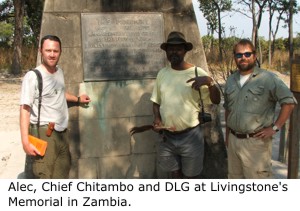 |
Baobab Trees
|
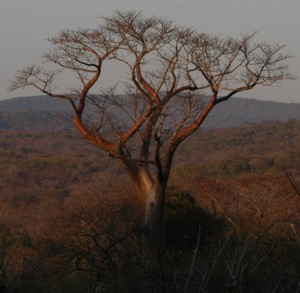 |
Baobab trees are endemic to Africa. In Zambia, their enormity contributes to almost any vista, and they provide excellent opportunities for group photos.
The top photo is of a baobab right along the Great Eastern Road, just west of the Luangwa Bridge. From left the right the posers are Alec, Jerry, Dan and Kevin.
The baobab to the left was in sight at one of our roadside campsites and looked equally majestic at sunset or sunrise. |
Wildlife
Mosi-au-Tunya (Victoria Falls)
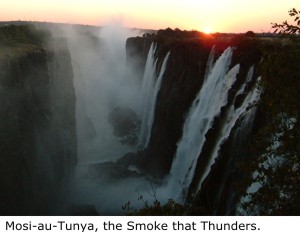 |
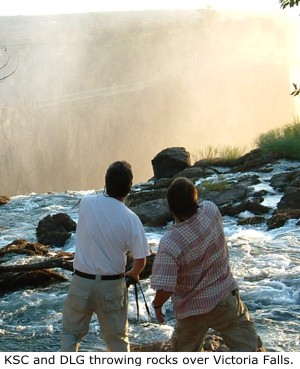 |
Little needs to be said about Victoria Falls. It was beautiful. These pictures can hardly do the sight justice, but you can click here to see and hear a quicktime of Mosi-au-Tunya. |
|